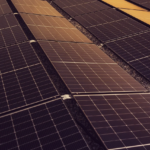In 2016, electrical utility customers experienced on average 1.3 interruptions and went without power for four hours total during the year.
You may think that’s not so bad. Anyone can last four hours without power through an entire year, right?
Tell that to survivors like those in New York that broke the norm by going 337 consecutive hours without power after Hurricane Sandy.
Power outages can be more than just a general inconvenience. Unreliable power is one of the two things that can turn a first-world country into a third world country in short order. Clean water comes in a close second.
So the real question isn’t just if you need a generator, it’s what generator do you need to keep the power on while your utility’s power linemen are doing their jobs.
Do you need a whole-house generator on standby?
What is a Whole-House Generator
A whole-house generator is exactly what it sounds like — a generator that powers the entire house.
A supplemental generator will power just what you need when you need it, so if you just need a sump pump running or a fridge going, then you can plug that into your portable generator. But you often have to choose exactly what you need most in your house.
You cannot typically run your entire house off a portable generator.
So why doesn’t everyone have a whole-house generator, then?
For one, they take up room. You need a specific space such as a concrete slab behind your house where the generator perches. These aren’t your motors in a cage. They look more like an air conditioning unit.
The whole-house generator will supply your home with uninterrupted power as long as you need it. Often natural gas, propane, or diesel will power your generator.
Generators like the Generator 3 Phase will easily power your entire house and not have you choose whether you’d like a dry basement or food that isn’t rotten.
Whole-House Generator Options
Because generators, in general, aren’t a new concept and because we live in a constantly innovating world, you have a host of options when selecting a whole-house generator.
Remote Monitoring
You can actually monitor some generators remotely. Your smartphone, tablet, or pc can access the generator to see if it’s running. You can check on the operating status and maintenance alerts as well.
This feature helps you take care of your home before a power outage starts.
Nothing can cause more frustration than when your power goes out and your generator, which you spent thousands on, does not do its job. Then you have the damage caused by the power outage and the cost of fixing the generator.
Remote maintenance and alerts help avoid this disaster.
Automatic Operation
Whole-house generators typically do not require you to flip a switch or drag a dusty machine out of a shed. Instead, an electrition can hard-wire the generator into your home, which means it will automatically kick in when the power goes out.
So imagine you’re at work, and the power goes out at home. You can stay comfortable in your chair knowing you do not have to rush home to flip a switch and keep your house safe.
Refueling Optional
Generators typically run on LP fuel, natural gas, or diesel. Whole-house generators will typically be connected to your LP fuel tank or natural gas line, so when the power turns off, the generator turns on automatically and has a healthy supply of fuel.
Your whole-house generator will be connected to your electrical panel, which means no ugly extension cords running out an open window connecting your appliances to a generator.
How Big of a Whole-House Generator Do I Need?
Whole-house generators come in a variety of sizes. To find out what you need, total up the wattage needs of the appliances you need to be powered during an outage. Make sure you consider bigger appliances and the startup wattage for them, like a refrigerator. Startup wattage will be bigger than running wattage.
Most generator companies have a calculator where you input your square footage and then select your appliances. As you run through these selections, do not forget special needs like sump pumps or lift stations.
Your best bet, however, is to have an electrician size your wattage needs.
Consult a Professional
A qualified electrician will help you not only know the wattage you’ll need, but he will recognize the start-up wattage needed.
Not all power is made equal. Utility-grade power and generator power are not exactly the same.
Generators produce total harmonic distortion, something that confuses and sometimes damages plugged-in sensitive devices. Picture a hard-wired fire-alarm melting in front of you because of a power surge. That’s the result of different types of electricity.
To avoid surge problems, homeowners should look for a backup power generator with THD of five or six percent below especially if you have sensitive electronic devices like a plasma TV or an HVAC system with a sensitive start-up system.
Benefits of a Whole-House Generator
Whole-house generators cost a lot of money compared to mobile, supplemental generators. So what’s the benefit of laying down the chunk of cash that could buy a car instead?
First, whole-house generators typically have a higher-quality, automotive-style engine. Picture the hum of a car running outside of your home versus the buzz of a lawnmower. That’s the difference in sound.
Because of the lower RPMs, it has reduced noise.
Also typically a whole-house generator is liquid-cooled versus air-cooled, which means it handles extended outage times better than a supplemental generator. It is less likely to burn out.
The beastliness of a whole-house generator also means it requires less maintenance. You have longer maintenance intervals with this efficient generator.
It also typically has load management and A/C shedding options, meaning you can manage the electrical load just like your utility company would and not burn out your generator.
Plus, you back up an entire home instead of backing up specific circuits. You do not have to choose if you’d rather keep the food cold in the fridge or cook dinner on the range tonight.
Steps to Selecting a Whole-House Powered Generator
Start by choosing a fuel source. You will have the options of natural gas, liquid propane, and diesel. Propane and diesel will require a separate tank of fuel, so make sure you have room for those, and keep those tanks full. Natural gas will be connected to your natural gas line that goes to your home.
Make sure your gas meter and gas lines are the correct sizes. A contractor can verify this information.
Then, select the right size of the generator. The size will depend on your home size and wattage needs. If you do not have a good working knowledge of electricity and load requirements, consult an electrician.
Remember that a higher-rated generator will run at approximately 80% of its full capacity. You do not want to push your generator too hard, so do not plan on using it as its full capacity.
Also, central AC units draw the most wattage, so if you need your AC, pick a big generator.
Then, pick a transfer switch. You may use a manual one like turning on a lightbulb, or you can use an ATS or automatic transfer switch. The ATS works best as it springs into action whenever the generator detects a power failure.
With the ATS, the generator continuously senses the utility power. When it detects an outage, it starts the engine and disconnects the electricity coming from the line. It then energizes home power through the generator power.
Be Aware
If whole-house generators are so great, why doesn’t everyone have them?
Other than the great cost of them, some generators do not fit into the neighborhood and city regulations. Know the regulations in your neighborhood and city. Many cities have noise ordinances that restrict generators.
Also, check the building codes for your neighborhood. You may have a machine that rates below the noise ordinance regulation, but if you have it too close to the building, you may be breaking a building code.
Many building codes have restrictions regarding the distance a generator can sit from a building. Building owners don’t want flammable materials within feet of their front or back door. So urban installations can be tricky.
Check your neighborhood, city, state, and even federal regulations. You may need a permit to use your generator.
Keep the Lights On
Having power means more than have the ability to cook your stir-fry or watch Netflix during a storm. For some people, it means keeping their life-saving devices like oxygen tanks running.
A whole-house generator will keep the lights on in your home and allow residents to live as comfortably and safely as if the power had never gone out.
Keep visiting our blog to learn more ways to keep your life comfortable and enjoyable.




